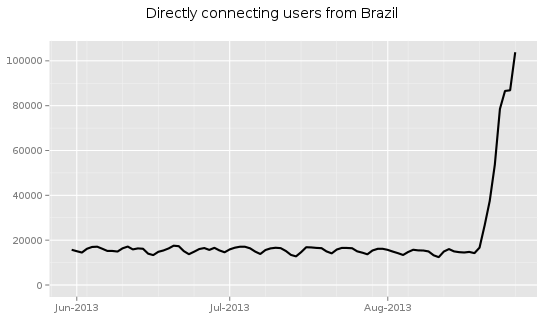Insatiable demand for minerals and rare earth elements, coupled with
dwindling resources on land have stakeholders across the world looking
to a new frontier: the deep sea.
Advancing mining technologies are making the prospect of exploiting seafloor minerals—including gold, copper, zinc, cobalt and
rare earth elements (REEs)—not only possible but also imminent, with commercial licenses to be granted by the
International Seabed Authority from 2016.
China has a
stronghold
on REEs, controlling a staggering 97% of global production. These
finite elements and other precious minerals are used in the creation of a
massive range of electronics devices, emerging green technologies and
weapon systems, triggering a strategic scramble to exploit new sources.
In what has been described as a
global race, governments and companies are keenly eyeing this emerging mining arena, eager to get their slice of the next
“gold rush” as it’s made increasingly economically viable. In 2010, there were eight
exploration licenses,
currently there are 17 in the high seas of the Pacific, Atlantic and
Indian oceans. There is also significant interest in the ocean’s
resources within territorial waters, particularly in the Pacific Ocean,
where more than
1.5 million sq km
of the seafloor is currently under exploration license. This is an area
roughly comparable to the state of Queensland in Australia.
The president of the International Marine Minerals Society, Dr. Georgy Cherkashov, was
quoted
last year linking the rush for licenses to the reality of “first come,
first get,” saying the shuffle to secure the most promising sites
represents “the last redivision of the world.”
Three types
of deep sea mineral deposits have drawn interest. These are seafloor
massive sulphides (SMS), manganese nodules and cobalt-rich crusts. In
the Pacific Ocean, currently the most commercially feasible are SMS,
which are created by the activity of deep sea
hydrothermal vents.
Canadian company Nautilus Minerals has more than 500,000 sq km
licensed in Papua New Guinea (PNG), Tonga, Fiji, Vanuatu, the Solomon
Islands and New Zealand. Nautilus Minerals (NM) is forging the way for
others in this frontier, already holding a 20-year license for the
world’s first commercial seabed mining operation, 1.6 km beneath the
Bismarck Sea in PNG. The company’s flagship
Solwara 1
project involves exploiting SMS to extract ore containing copper and
gold at a site 30km from the coast of New Ireland Province and about
50km from the town of Rabaul in East New Britain.
Between 2005 and 2011 the
company spent $80 million USD on exploration programs for its PNG venture.

For
environmentalists and activists the idea of this emerging mining
enterprise coming to fruition is concerning. Greenpeace released a
detailed
report
last month stating that less than 1% of high seas (international
waters) and 3% of oceans are protected. Little is known about the
biodiversity that exists deep below; some scientists suggest it would
take 10-15 years of extensive research before we can even begin to
understand this ecosystem.
Hydrothermal vents, where SMS deposits form, are
said to support one of the rarest and most unique ecological communities known to science, including creatures like two-meter long
tube worms and
armor-plated snails. An independent
study of the Solwara 1 site found 20 new species and
experts are worried that species will be eliminated from the mining site before they have been discovered.
What’s Happening in Papua New Guinea?
A respite for critics of the Solwara 1 project came in June 2012,
when contract disputes emerged between the PNG government and NM. The
commercial disagreement
reportedly
centers on the government’s share of investments costs that will lead
to a 30% stake in the venture. This ongoing dispute stalled the project,
which was expected to start by the end of 2013, and caused
NM to suspend construction of its seafloor production system.
But these commercial issues could soon be ironed out, depending on the outcome of an arbitration hearing on August 26.
If the government becomes a shareholder in the venture, a conflict of
interest is apparent that could compromise its ability to regulate the
mining activities.
NM’s interim president and CEO, Michael Johnston, who was quoted in
Mining Weekly Online
earlier this month, seems positive about the likelihood of moving
forward with the mining plans saying, “I think we’ve turned the corner.”
With severely limited land resources—in many of the Pacific region’s islands as much as 99% of
sovereign territory is ocean—
some Pacific Islanders are enthusiastic about the emerging mining frontier and the economic potential of their expansive sea zones.
Others are not convinced.
The Solwara 1 project has been met with massive opposition from local communities and campaign groups.
A petition to “Stop Experimental Seabed Mining,” with more than
24,000 signatures was delivered to the PNG government last year. A coalition of groups against the project, aligned as the
Deep Sea Mining Campaign,
argue that PNG will be the guinea pig of an untested technique in an
ecosystem that the world knows little about, representing an
unacceptable level of risk to both local communities and marine
biodiversity.
Anxiety over environmental risks and social division associated with the Solwara 1 project is evident in a
video of testimonies put together by local non-government organization
Bismarck Ramu Group
(BRG). Patrick Kaupun, an activist from East New Britain Province said
that companies like Nautilus are “resource poor” while many of PNG’s
educated are “money poor,” continuing that the resource poor and the
money poor have caused the rest of the population “to get caught up in
this net of theirs.”
“When you look at the idea of seabed mining, gold is not the only
thing found in the sea. We have fish, which are part of our everyday
lives. We have no alternative because our lives depend on the health of
the sea. ”
“The sea is of customary and economic value to us. Development
alternatives should compliment our existing activities. The Government
is interested in getting its revenue, it has no thought for our welfare
or our future.”
Details of the Mining Process and Potential Impacts
The Solwara 1
mining process
involves removing the surface rock and sediment with remotely operated
vehicles (about 130,000 tons of sediment and 115,000 tons of rock over
20 months) and dumping this at adjacent tip sites. Hydrothermal vents
are then leveled, a mining bench cut and slurry is piped to a vessel
where the ore is separated; the remaining water is pumped back to the
seafloor and the ore is sent to overseas processing facilities.

NM expects to ship 1.3 million tons of material to shore each year and
explains that the method uses technologies adapted from the offshore oil, gas and dredging industries.
Two independent reviews of NM’s environmental impact
assessment
(EIA) have raised alarms. Foremost, is the possibility for upwelling
(vertical water movement), ocean currents and spillages from the mining
system causing a spread of heavy metal pollutants in the form of
sediment plumes, potentially poisoning marine species and entering the
human food chain.
Oceanographic expert, Dr. John Luick, who authored the most recent
review,
explains that the EIA does not give basic information needed to assess
the possible impacts of sediment plumes on marine ecosystems or local
communities. “The People of PNG deserve better.They should be able to
feel confident that the approvals process is open and based on the best
available science.”
NM
dismissed Dr. Luick’s findings.
NM vice president of corporate social responsibility, Dr. Samantha Smith told
The Diplomat
that any extraction impacts would occur 1300m below the surface, well
away from fish populations, adding that naturally occurring plumes from
subsea volcanoes and hydrothermal vents don’t enter the food chain and
neither will sediment plumes from mining.
Coordinator of the Deep Sea Mining Campaign, Dr. Helen Rosenbaum, is
not satisfied with these assurances, as reflected in her report:
Out of our Depth: Mining the Ocean Floor in Papua New Guinea.
Not only are sediment plumes likely to smother seabed biodiversity,
according to Dr. Rosenbaum the toxic effects on organisms, which would
accumulate up the marine food chain, have not been tested. This is
especially significant because of Pacific Islander’s reliance on
seafood.
In the last three years, communities in New Ireland Province, have
reported
incidents like cloudy water affecting diving activities, schools of
dead tuna washing up onshore and sharks not responding to an ancient
tradition of
shark calling to local non-government organizations,
Act Now and BRG. Dr. Rosenbaum attributes these events to Nautilus’s pre-mining activities. She told
The Diplomat that due to lack of resources there has been no independent scientific follow-up.
“I would suggest that the vessels involved in exploration and
pre-operation activities have caused disturbance and noise that has
affected sharks and other marine life. The dead tuna and cloudy water
would suggest high levels of chemical toxicants, sufficient to cause an
acute toxic affect. ”
She questions what would have happened if locals ate the dead tuna,
saying this incident highlights the lack of accountability and
transparency around impacts.
NM Dr. Smith said that “none of the local communities we have engaged
with claim to have seen dead fish and there have been no concerns
raised about out-of-the-ordinary shark response.”
She called the claims “outrageous” and “untrue,” urging alarmed
members of the public to contact the company to discuss ways forward
rather then causing “undue stress and worry for all concerned.”
NM vice president of strategic development and exploration, Jonathan Lowe, told
The Diplomat
that the company’s exploration license is for low impact activities and
that the techniques are commonly used by marine researchers. These
include mapping to locate volcanic activity, measuring properties of ash
plumes, gathering rock samples and drilling to estimate the amount of
metals and minerals at the SMS sites.
Mr. Lowe commented that the Solwara 1 site is dynamic and resilient
shown by the way it recovered in the years between drilling campaigns,
one in 2007 and the other in 2010/2011. “It became very difficult, nigh
on impossible, to identify and recognize where we had drilled
previously. ”
Pushing for Precaution and Participation

Marine
experts, government representatives and campaigners alike want to see
the “precautionary principle” applied, citing the serious environmental
risks seabed mining poses.
The Environmental Law Alliance Worldwide supports this standard, stating in a
report
that the uncertainty surrounding deep sea mining warranted
“unprecedented caution.” It added, “It is grossly uncertain whether the
deep sea environment can withstand the assault of mechanized mining.”
Deep sea biologist, Dr. Kerry Howell, told
The Diplomat that
she is uneasy about mining taking place in an environment known to be
vulnerable to disturbance and concerned about the cumulative impact if a
gold rush ensued. “If we are to proceed it must be slowly and with the
precautionary principle taking center stage. ”
“Deep sea scientists must be fully engaged with the process as this
community has the greatest understanding of the deep sea ecosystem. This
appears to be what has been happening with the Papua New Guinea project
but whether this continues to be the case as this industry develops
remains to be seen. “
Dr. Howell attended the recent
Deep Sea Mining Summit
in London and said she was struck by the open dialogue between
industry, scientists and NGOs. Industry representatives put forward the
idea that deep sea mining would be less environmentally destructive than
mining on land; while rejecting this argument, Dr. Howell believes that
deep sea mining would be less socially problematic because no
communities would be displaced.
As resources on land become scarce the demand for these materials continues to rise.
NM’s Dr. Smith insists deep sea mining would take pressure off
land-use conflicts and that going to the sea makes sense. “Our planet is
known as the Blue Planet, because 70% of its surface is covered in
water. Does it make sense to continue to look to the rarer part of our
planet to meet our minerals and metal demands? Or does it make sense to
look to the more abundant part?“
In addition to the precautionary principle, activists want to see the principle of “
Free Prior and Informed Consent”
upheld, which means local communities should be involved in any
decision-making process that could affect the areas they customarily own
or occupy.
This gets more complicated when it comes to matters of the sea.
The Secretariat of the Pacific Community’s (SPC)
framework
advises that “coastal stakeholders” should be identified during the
application process, their consent sought and compensation agreed to if
mining activities are likely to impinge on fishing and other customary
rights.
However, ocean borders are fluid and its resources for common use,
making the definition of “coastal stakeholders” slippery. This
definition is also complicated by the fact that PNG laws favor
state control of the sea and ignore indigenous maritime tenure. This has proved a source of
contention
for the West Coast Central Seabed Mining Land Owners Association, which
asserts its rights over the sea’s resources in its region.
The Pacific Deep Sea Minerals Project, an independent advisory body
established by the SPC, is working to address the concerns surrounding
deep sea mining by running public workshops and creating information
resources. It also circulated a
video.
In the video, SPC director general, Jimmie Rodgers candidly says “Is it
urgent? Is it important now? Yes! Because multinationals are not going
to wait to give Pacific Island countries time to look at all the
studies, environmental analysis, before they come in—they push in.” He
continues that some countries have the technical knowledge to withstand
that pressure but many do not.
Elsewhere in the Asia-Pacific
It recently emerged that the government of Vanuatu had issued
145 licenses for offshore mining exploration in the past five years, without any community consultation.

Vanuatu Minister for Land and Natural Resources, Hon. Ralph Regenvanu,
said
at a workshop on social impacts, that the licenses were issued without
any “proper national regulatory framework for seabed mining or for
scientific research,” adding that he was overseeing reform efforts to
have the principle of “Free Prior and Informed Consent” enshrined in
law.
He used Australia, where a three-year
moratorium
on underwater mining activities off the Northern Territory was enacted,
as an example of the precautionary principle being correctly applied
and advised Pacific Island states that have not yet issued licenses to
follow suit.
Nautilus Minerals are far from the only group with seabed mining
interests in the Asia-Pacific. There is also Australia-based Bluewater
Metals prospecting in the
Solomon Islands, U.S. company Neptune Minerals with a
handful of licenses in the Pacific region,
Chatham Rock Phosphate interested in phosphate mining in New Zealand,
Japan with a license to explore for cobalt and nickel off the Okinawa Islands,
South Korea surveying the seabed off Tonga and Fiji, and
China filing the first application to search for mineral deposits in the deep seas of the Indian Ocean, to name just a few.
The 1982 Law of the Sea Convention designates the mineral resources
in the high seas as the “common heritage of mankind.” It is not yet
clear how this concept will work in effect. What is clear, however, is
that our lack of understanding about deep sea ecosystems is as vast as
the ocean. In the
words of
CSIRO’s Dr. Chris Yeats: “We know more about the surface of Mars and
Venus than we know about the deep ocean floor, broadly speaking it is a
great unknown.”
So what will be next? Mining in space? Don’t be surprised. It’s already in the
pipeline.
 In
recent years US colleges and universities have undertaken drastic
measures to reduce piracy, but none comes close to the “copyright
awareness” campaign one of the top medical schools is currently running.
In
recent years US colleges and universities have undertaken drastic
measures to reduce piracy, but none comes close to the “copyright
awareness” campaign one of the top medical schools is currently running.




 On the occasion of its 10th anniversary last Saturday, The Pirate Bay
On the occasion of its 10th anniversary last Saturday, The Pirate Bay 





 The
following reasons for the US-UK-France threats to launch unlawful
‘punitive’ airstrikes against the Syrian military are self evident. As
follows:
The
following reasons for the US-UK-France threats to launch unlawful
‘punitive’ airstrikes against the Syrian military are self evident. As
follows:






 For
environmentalists and activists the idea of this emerging mining
enterprise coming to fruition is concerning. Greenpeace released a
detailed
For
environmentalists and activists the idea of this emerging mining
enterprise coming to fruition is concerning. Greenpeace released a
detailed  NM expects to ship 1.3 million tons of material to shore each year and
NM expects to ship 1.3 million tons of material to shore each year and  Marine
experts, government representatives and campaigners alike want to see
the “precautionary principle” applied, citing the serious environmental
risks seabed mining poses.
Marine
experts, government representatives and campaigners alike want to see
the “precautionary principle” applied, citing the serious environmental
risks seabed mining poses.